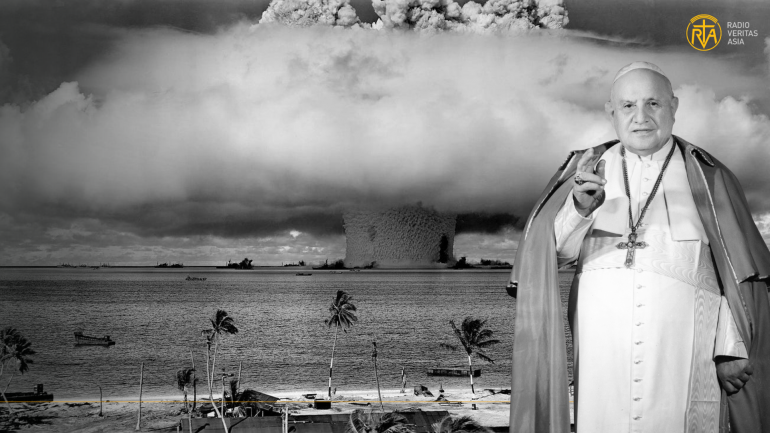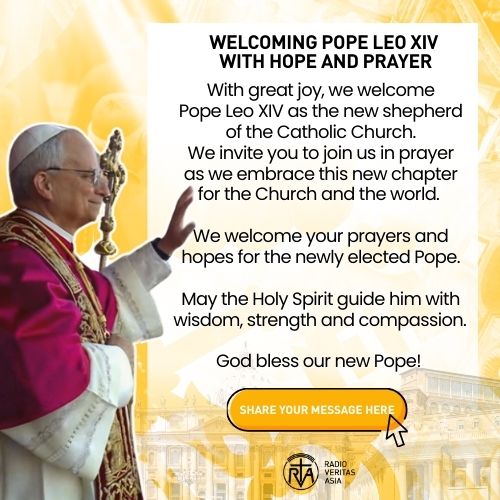The Pope who diffused a nuclear war

1962 is forever remembered as the year when the Cold War between the United States and the Soviet Union came the closest to nuclear destruction. On October 16 of that year, medium and long-range missile launch facilities of the Soviets were discovered in Cuba, with the capability of attacking the United States. This resulted in a 13-day standoff between the two superpowers, known today as the Cuban Missile Crisis.
History tells us that John F. Kennedy of the United States and Nikita Khrushchev of the Soviet Union managed to resolve the crisis diplomatically. Aside from the two heads of state being the major players in this conflict, one other voice was heard across the world: Pope John XXIII. The US and the USSR focused on their geopolitical rivalry and arms race; the pontiff remained committed to his calls for peace.
A diplomat of reconciliation
Years before he found himself as a mediator in the Cuban Missile Crisis, Angelo Giuseppe Roncalli was one of the most active diplomats of the Holy See. After serving in the Christian minority-countries of Bulgaria, Greece, and Turkey, he was appointed as apostolic nuncio of France in 1944.
At the time, France was newly liberated from the Germans. Therefore, it fell into the hands of Archbishop Roncalli to reestablish the independence of the Church and deal with the rise of radicalism around the French clergy. This experience greatly shaped his peacemaker identity that he would bring to his papacy.
A mediator of a Cold War crisis
Elected to the Petrine ministry in 1958, one of Pope John XXIII’s first pronouncements to the world is his desire to summon an ecumenical council to “bring the Church up to date.” It would manifest through the convening of the Second Vatican Council on October 11, 1962, only a few days before the breakout of the Cuban Missile Crisis.
The pontiff, who was already reaching out to the Soviet Union even before the crisis, made strong statements about peace in his opening message.
“We feel we must disagree with those prophets of gloom, who are always forecasting disaster, as though the end of the world were at hand. In the present order of things, Divine Providence is leading us to a new order of human relations which, by men’s own efforts and even beyond their very expectations, are directed toward the fulfillment of God’s superior and inscrutable designs. And everything, even human differences, leads to the greater good of the Church,” he said.
Tensions escalated in the waters around Cuba while the Second Vatican Council was underway in Rome, and it seemed that nuclear war was inevitable. As the world braced for catastrophe, Pope John XXIII turned his attention to the cause of peace.
President Kennedy, a Catholic, sent a message to the pope amid the conflict. The Holy Father promptly responded, and copies were sent to both the US and Soviet embassies.
“We beg all governments not to remain deaf to this cry of humanity. That they do all that is in their power to save peace. They will thus spare the world from the horrors of a war whose terrifying consequences no one can predict,” urged Pope John XXIII. He also asked world leaders to continue their discussions towards peace. Two days later, Khrushchev agreed to withdraw the missiles in Cuba, and Kennedy pledged not to invade the Caribbean nation. Moreover, the two superpowers set up a “nuclear hotline” to allow direct emergency communications between Washington and Moscow.
The Second Vatican Council was just starting, but Pope John XXIII showed the whole world what Christian unity looked like and how it can transcend even to non-Christians.

A warm-hearted reconciler
Five months later, in April 1963, the pope reaffirmed his stance on peace through his encyclical Pacem in terris (Peace on earth). This landmark document underlined the importance of nuclear disarmament and ethical considerations in scientific and technological advancement.
“In this age which boasts of its atomic power, it no longer makes sense to maintain that war is a fit instrument with which to repair the violation of justice… We are hopeful that, by establishing contact with one another and by a policy of negotiation, nations will come to a better recognition of the natural ties that bind them together as men,” wrote Pope John XXIII.
Alongside his call for world peace, the Holy Father also emphasized why human rights and moral good must be promoted on a global scale.
“The common good of individual States is something that cannot be determined without reference to the human person, and the same is true of the common good of all States taken together. Hence, the public authority of the world community must likewise have as its special aim the recognition, respect, safeguarding, and promotion of the rights of the human person,” he wrote.
Two months after the publication of Pacem in terris, Pope John XXIII passed away. He did not live to see the completion of the Second Vatican Council nor the progress of nuclear disarmament. It was his successor, Pope Paul VI, who undertook both of these missions.
In the final chapter of Gaudium et Spes (Joy and Hope), one of the four apostolic constitutions of Vatican II, the Church calls for the fostering of peace and the promotion of a community of nations. Furthermore, Pope Paul VI oversaw the improvement of diplomatic relations between the Holy See and Soviet Union.
The Catholic Church always remains neutral in times of war. But Pope John XXIII proved that neutrality does not mean non-action. During a near-apocalyptic situation, his weapon was peace. If we can do the same and disregard the intent to hurt and the culture of death, we can help build the Church he envisioned, one firmly rooted in spirituality, hope, and the eternal love of Christ.
(Luke Godoy is a freelance writer based in the Philippines who contributes regularly to RVA.)








